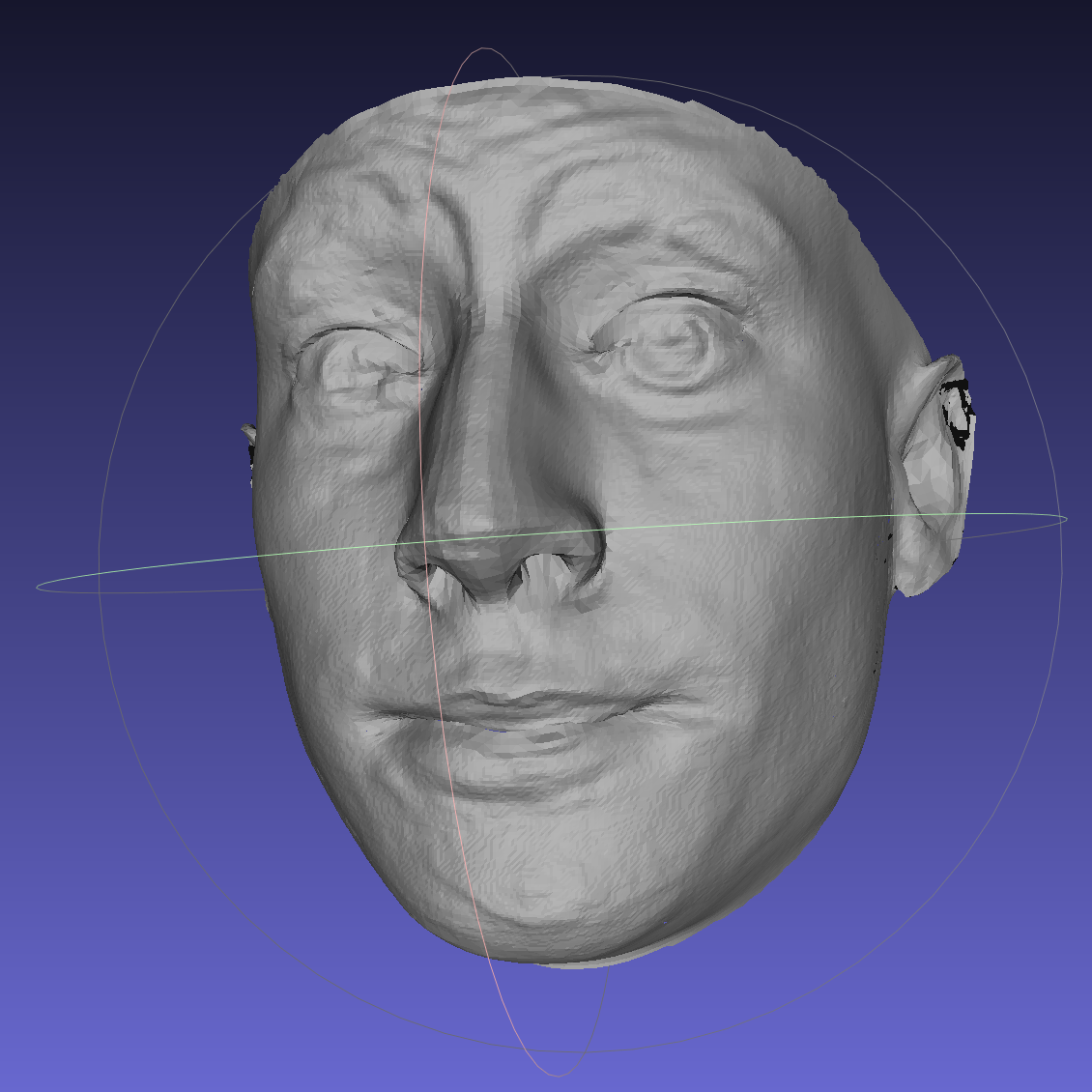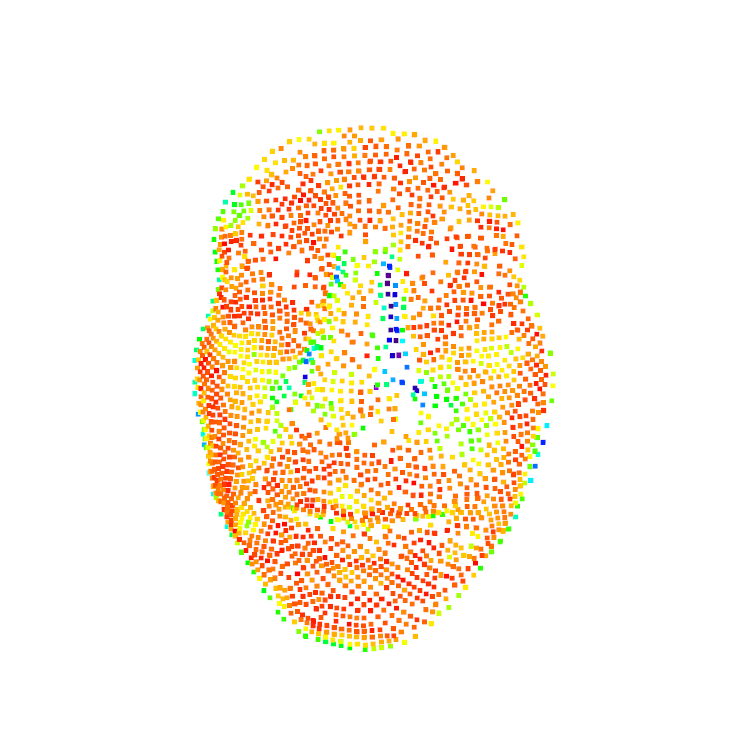An Evaluator for Extreme 3D Face Reconstruction with Facewarehouse ground truth
The project's aim is to compare the results obtained with the pretrained Extreme 3D Faces CNN (https://github.com/anhttran/extreme_3d_faces) [1] and a ground truth using a well-known dataset (http://kunzhou.net/zjugaps/facewarehouse/) [2] to measure the similarity between the two models and, hence, estimate the performance of the net. The aligment phase is realized with cpd rigid algorithm [3].
Dependencies
To build and run the files, you will need the following libraries:
- scikit-learn 0.21.2
- matplotlib 3.1.1
- pycpd 1.0.5
- numpy 1.16.2
- open3d-python 0.7.0.0
- scipy 1.3.0
- h5py 2.9.0
How to make it work
To run the whole project, you are required to follow some steps. The parameters of each function will be explained in the next subsection.
- Download the Extreme 3D Faces
and follow the instructions to make it work correctly. Otherwise, you will need
some 3D models from another CNN in a
.plyformat (in this case, you will also need to adapt the next steps). - Save the
.plyfiles of the network in thefilePlyRetefolder. - Get the FaceWarehouse dataset
- Copy the data of the dataset in a
faceWarehousefolder. - Run the
plyTotxt()function inplyConverter.pychoosing the right values of the parameters. This will convert the.plyfiles in a bunch of.txt(stored in thedatafolder) files in order to make the next steps easier. - Run the
MatTotxt()function in thematConverter.pyfile. This will convert the dataset's.mat3D models in a.txtformat and store them in agroudtruthfolder. - Run
distancesTest()intest.pyto find out how much the two models are similar. If you want an overview of the accuracy of the different poses, you can also runposesPrecision(). - To build a heatmap of the alignment, you can run the
open3Dheatmap()function in theheatmap.pyfile.
Parameters
plyTotxt():directorystands for the directory where you can find the.plyfiles. If you follow the steps above, this should be set to'filePlyRete/';compressionLevelstands for the sampling parameterKof the KNNSearch algorithm: since a single model has over 170.000 points, you will probably need to sample the model (depending on your hardware). If you have a single-node cluster, we recommend you to leave this parameter to its default value;radiusstands for the maximum distance (from the nose tip) of the useful points: the CNN we've used reconstructs the ears, while the ground truth models have not also those points so, to achieve a better alignment, we've focused just on the face setting this parameter properly.MatTotxt(): same asplyTotxt(), but with ground truth Matlab files.distancesTest(): the FaceWarehouse dataset is structured this way: there are 150 candidates and 20 poses for each candidate. This means we can choose a subset of the candidates and also a subset of poses to run the test.testersandposesare two lists in which you just need to put the number of the testers and the poses you want to test.posesPrecision(): same asdistancesTest()open3Dheatmap():targetstands for the ground truth.txtmodel file path, whilesourcestands for the CNN.txtmodel file path.
References
[1] A. Tran, T. Hassner, I. Masi, E. Paz, Y. Nirkin, G. Medioni, Extreme 3D Face Reconstruction: Seeing Through Occlusions, IEEE Conf. on Computer Vision and Pattern Recognition (CVPR), 2018.
[2] Cao Chen, Yanlin Weng, Shun Zhou, Yiying Tong, Kun Zhou: "FaceWarehouse: a 3D Facial Expression Database for Visual Computing", IEEE Transactions on Visualization and Computer Graphics, 20(3): 413-425, 2014.
[3] Andriy Myronenko and Xubo Song, Point Set Registration: Coherent Point Drift, IEEE Trans. on Pattern Analysis and Machine Intelligence, vol. 32, issue 12, pp. 2262-2275, 2009.



